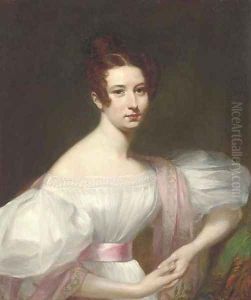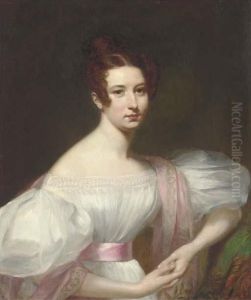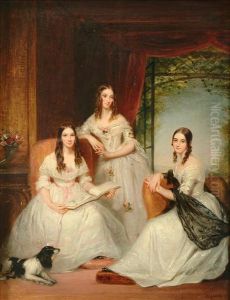William Gush Paintings
William Gush was a British portrait painter, born in London in 1813. His artistic journey began at an early age, influenced by the vibrant cultural scene of the early 19th century London. Gush did not confine himself solely to the British Isles for his education and inspiration; he traveled extensively, absorbing artistic techniques and the essence of different cultures, which later influenced his portrait style. Throughout his career, Gush developed a distinctive style that combined detailed realism with a sensitivity to his subjects, making his portraits not just a physical likeness but also a glimpse into the character of the sitter.
Gush was particularly noted for his portraits of clergy and aristocracy. His works were characterized by their fine detail, rich colors, and the sophisticated portrayal of fabric and texture, which won him considerable acclaim during his lifetime. He exhibited at the Royal Academy and other prominent venues, securing his reputation as a skilled portraitist. Beyond individual portraits, Gush also explored religious themes and occasionally historical subjects, though it is his portraits that have left a lasting legacy.
Despite his success, William Gush did not gain the same level of enduring fame as some of his contemporaries. This can be attributed, in part, to the changing tastes in art over time, as well as the overshadowing influence of other Victorian artists who were his peers or successors. After his death in 1888, Gush's works continued to be appreciated by art collectors and historians, particularly for their contribution to Victorian portraiture. His paintings are preserved in various art galleries and private collections, offering insight into the era's cultural and social nuances. Gush's legacy, while perhaps not as widely recognized as that of some of his contemporaries, remains important for understanding the breadth and depth of Victorian art, especially in the realm of portrait painting.


